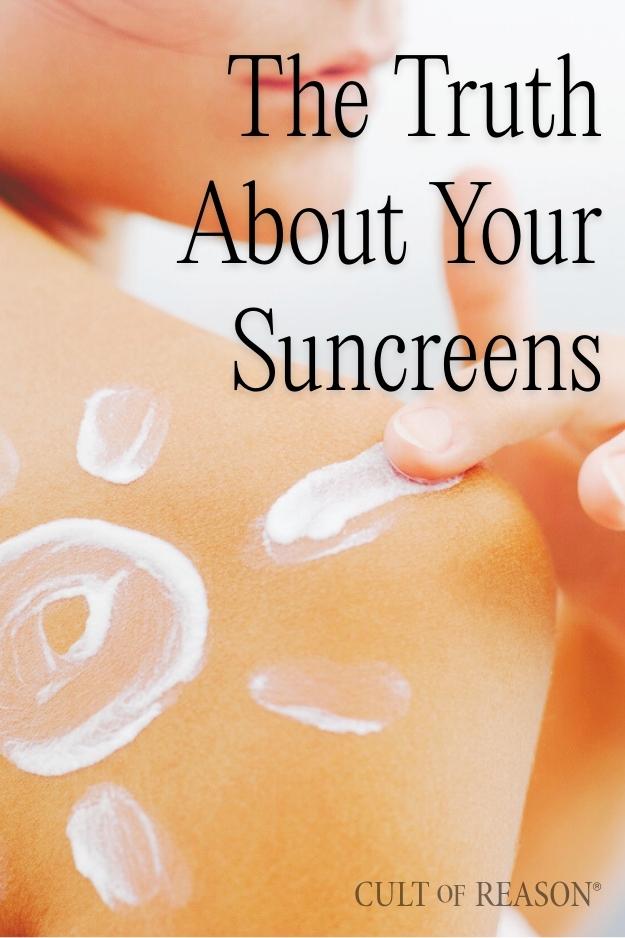
How to Choose Sunscreen in the U.S.: What the FDA Doesn’t Approve Matters
Share
What You Don’t Know About Sunscreen in the U.S. (But Should)
Everyone says: just wear sunscreen.
But they don’t say: make sure it’s the right kind.
Here’s the problem. That “holy grail” French pharmacy sunscreen your favorite influencer swears by? It’s likely not the same formula when you buy it in the U.S. And that matters — a lot.
While Cult of Reason doesn't make a sunscreen, we think this is important enough to get into so you can choose wisely. We have no skin in the game, but we sure know you do! Let’s break down what’s really happening, and how to shop smart.
Why the U.S. Lags Behind in Sunscreen Tech
Unlike the EU or Asia, the United States regulates sunscreens as over-the-counter (OTC) drugs, not cosmetics. That means the FDA must approve each individual UV filter used in a sunscreen — and that approval process is slow.
As of 2025, the FDA has approved only 16 UV filters, and only 8 of those are commonly used in modern sunscreen formulas. Compare that to the EU (which allows 29+) or South Korea and Japan, where innovation in SPF filters moves way faster.
Translation:
When you buy a Korean, Japanese, or European sunscreen in the U.S., the version you're getting is usually reformulated to meet FDA rules. That lightweight, invisible, high-protection formula you saw online? You’re probably not getting it.
Common Misconception: “It’s the Same Product, Just Sold Here”
Not quite.
-
Different UV filters = different protection
-
Texture and feel can change based on what’s allowed in the formula
-
Performance claims (like “PA++++” or “UVA1 protection”) aren’t always FDA-approved or verified in U.S. versions
Unless you’re importing directly (and even then, there’s risk), you’re not getting the same formula.
What to Look for in U.S. Sunscreens
Don’t panic. There are effective, elegant, acne-safe SPF options in the U.S. — but you need to know what you’re looking at.
✅ Check for:
-
“Broad spectrum” on the label (means it protects against both UVA + UVB)
-
Zinc oxide or titanium dioxide if you want a mineral SPF
-
Avobenzone, octocrylene, or homosalate in chemical formulas (the most stable filters currently allowed in the U.S.)
-
Non-comedogenic or “won’t clog pores” if you’re acne-prone
❌ Avoid:
-
“Reef-safe” as your only guide — it’s unregulated and means nothing legally
-
Sunscreens with alcohol high on the list if you have sensitive skin
-
Imported sunscreens that don’t clearly state their filters or SPF testing method
Mineral vs. Chemical Sunscreens: Which Is Better?
It depends on your skin type — not internet wars.
-
Mineral (zinc oxide + titanium dioxide): Great for sensitive or reactive skin. Tends to be thicker, can leave a white cast. Naturally blocks UVA/UVB.
-
Chemical (avobenzone, octisalate, etc.): Usually more invisible on skin. Absorbs UV rays before they damage skin. Better for oily/combo skin types if the formula is lightweight and non-comedogenic.
Both are safe. Both can work. What matters is choosing one you’ll actually use daily.
Acne-Prone or Reactive Skin? Here's What to Prioritize
-
Look for lightweight gel or fluid textures
-
Avoid coconut oil, isopropyl myristate, and heavy waxes
-
Fragrance-free is usually safer (but not always essential if the rest of the formula is solid)
-
Pair it with a hydrating serum like Quench to buffer any irritation
TL;DR — Smart Sunscreen Shopping in the U.S.
-
FDA limits the UV filters U.S. brands can use — that means some foreign SPFs sold here aren’t the same as what you see in viral posts
-
Choose broad spectrum. Read the ingredient list. Don’t just chase trends
-
Whether you go mineral or chemical, it has to fit your skin type and lifestyle
-
Layer with smart support (hydration, barrier repair) to keep your skin calm in the heat
GET 20% OFF YOUR FIRST ORDER WITH CODE WELCOME20.
WANT BLOG POSTS LIKE THIS DELIVERED TO YOUR INBOX? SIGN UP TO GET VIP ACCESS HERE.
